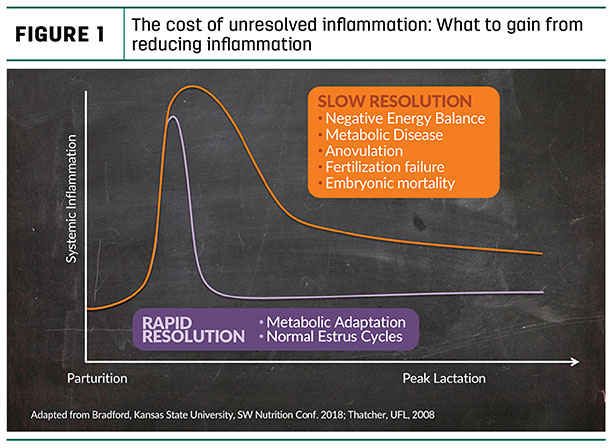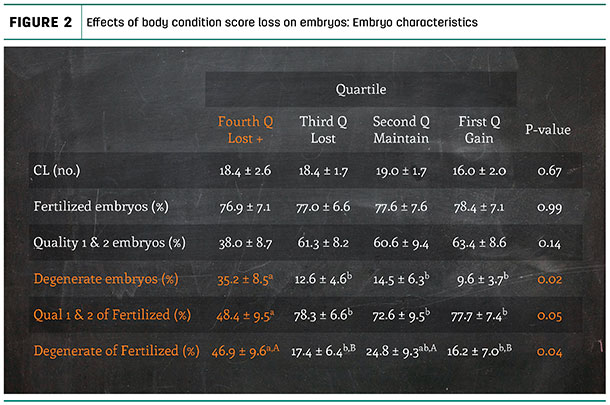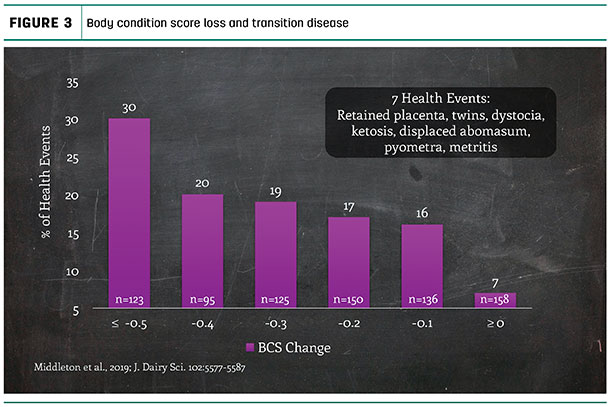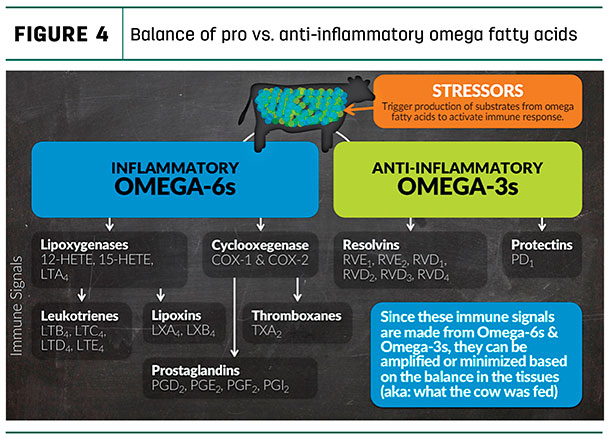As a kid, I remember gathering around the table after morning chores to eat a hearty breakfast of bacon and eggs. What could be better than a hot breakfast after peeling out of bed at 5 a.m. to help my dad get the cows milked?
Then one day, the American Heart Association announced that eggs were bad, and all those sunny-side-up mornings came to a halt. Little did we know until years later (2002) that eggs were falsely accused of contributing to heart disease, and that the refined carbs and sugars were the real problem – the root cause was excess inflammation, damaging our artery walls and making cholesterol sticky. In fact, research has found that inflammation is not only the main contributor to heart disease, but is likely the root cause of most our major health issues, including diabetes, Alzheimer’s and even depression.
What does the “redemption story of eggs” have to do with dairy cow health and reproduction, you might ask? The answer is: more than we probably know today. Currently, there’s an impressive group of dairy researchers across many universities seeking answers to better understand if excess inflammation in dairy cattle is a problem and, if so, whether it is a problem we can resolve for better health and reproductive results. Let’s take this step-by-step to connect the dots from inflammation to body condition loss to reproduction.
Inflammation defined
Before we dive into the research, let’s first define inflammation and our goal with managing immune function in dairy cows. Inflammation is the result of the immune system being activated to mount a response, whether it is to a mastitis infection or a more chronic stressor such as heat stress. Inflammation is not bad – in fact, it is very necessary. It is excess inflammation that is the problem. Dr. Barry Bradford from Michigan State (Figure 1) depicts the need for balance in immune function.

The cow’s immune system needs to respond well to the immune challenge and then rapidly resolve and repair to get back to balance, or homeostasis. When the resolution is slow, and chronic inflammation persists, there are many negative consequences, including metabolic dysfunction, anovulation, fertilization failure and higher embryonic mortality.
What causes excess inflammation?
No doubt, the transition cow is a cow at risk for excess inflammation. Calving is the primary event in her life cycle where she encounters the most stress, the greatest challenges metabolically, as well as changes physically. According to Dr. Maya Zachut from the Volcani Center in Israel, adipose tissue has a substantial role to play in helping the cow’s systems to maintain or regain balance, with both pro-inflammatory and anti-inflammatory responses coming from those tissues.
When cows lose excess body condition after calving, a release of pro-inflammatory signals trigger inflammation in the adipose tissue, and thus reduce dry matter intake (DMI) and impair insulin sensitivity. Some body condition loss after calving certainly is normal, but excess loss develops into an exaggerated inflammatory process with lots of consequences to cow health and fertility.
Beyond the transition period, there are plenty of other factors that can be additive insults that lead to systemic or chronic inflammation. These include heat stress, pathogen exposure, toxins in feed and other stressors.
BCS loss reduces fertility
Now that we’ve established how body condition loss triggers inflammation, let’s look at the direct evidence of how it affects embryo quality and reproductive results. Dr. Paul Fricke, UW – Madison, has explored in-depth the relationship between body condition loss after calving and impact on embryo quality in his paper titled “The High Fertility Cycle.”
- In work in 2014 (Figure 2), cows that had severe body condition loss post-calving (6% to 8% loss) had significantly more degenerate embryos and lower fertilization rates in the quality 1 and 2 embryos.

- In a related study in 2010, pre- and postpartum non-esterified fatty acid (NEFA) levels were collected across 91 herds in the Northeast to explore the correlation of NEFA levels to pregnancy success. Results showed that cows with higher NEFAs had a 16% lower conception rate.
- In a third study done in 2019, excessive body condition loss after calving showed measurably higher disease incidences. (Figure 3)

Prevent vs. treat vs. resolve
The immune system is complicated so, as you’d expect, treating inflammation is complicated as well. On one hand, we want to preserve a healthy immune response so the cow can ward off disease and fight her way back to health and balance. On the other hand, excess inflammation is costly – reduced health, infertility and lost energy she could have put toward milk production.
If we look back to the research on human physiology, Dr. Charles Serhan, Harvard medical professor, discovered a whole class of specialized pro-resolving molecules that actively work to resolve inflammation. These are aptly named Resolvins and Protectins, and are derived from the essential omega-3 fatty acids, EPA and DHA (Figure 4).

Serhan’s research findings offer us some great advice. “To treat excess inflammation, we don’t want to block the inflammatory response. We want to stimulate the resolution pathways,” Serhan says.
Practical steps to reducing inflammation
Clearly, managing inflammation matters in dairy cattle, not just in human health. While we are not seeking to reduce heart disease or Alzheimer’s in dairy cows, there’s strong evidence that how we manage and feed our cows has direct effects on her ability to resolve inflammation. While there is still much we will learn, here are some practical suggestions on where to focus your efforts.
- Minimize body condition loss after calving. If they are losing excess weight, examine the cause and make adjustments. Are they too heavy at dry-off? Did they not get pregnant on time? Did the summer heat knock them off their production curve?
- Maximize your cow cooling. As if you needed one more reason to keep cows cool, we know this seasonal stressor is an activator of inflammation.
- Feed a supportive level of EPA/DHA omega-3s, the precursors (raw ingredient) the immune system uses to make the pro-resolving molecules that help her regain balance.
As for the egg trauma from my childhood, I am over it. I’ve found new freedom in knowing the eggs are not to blame. Over-easy on some avocado toast is the best.






